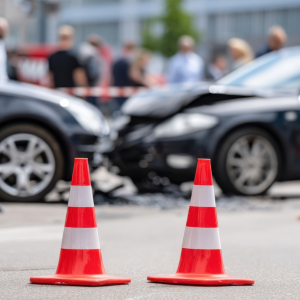Evidence gathering and preservation of forensic material are commonly thought of in the context of criminal investigation and defense. Most people, including lawyers, conjure up images of TV detectives and beautifully sculpted police types with high cheek bones and glamorous hair conferring at crime scenes while sexual tension builds.
Evidence Collection
But civil litigation requires evidence collection and preservation every bit as much as criminal litigation; it may not make for a hot TV series, but it’s just as essential to the work that’s required in order to prosecute a civil action.
This is true of any type of civil action, from breach of contract, to commercial disputes and the litigation of serious injury cases. Evidence preservation and gathering should be launched at the very beginning of the case. This includes photographing the incident location, property damage, injuries and medical treatment locations.
A trained and experienced civil litigation attorney who knows how to successfully try a serious injury case knows that analysis of such evidence as metal deformation, force vectors, tire marks to roadways and analysis of onboard computers may all become the difference in winning a case. These are only a few of the categories that need to be considered in assembling the necessary evidence for a serious injury case or other civil litigation.
Witness Interviews
Another investigation area that lawyers often overlook is witness interviews. Too frequently, witnesses are never contacted. They move or become unavailable and a crucial part of a case is lost.
Other times, if the lawyer knows that an interview is required, the lawyer makes the very serious mistake of interviewing witnesses by himself rather than with a private investigator. The problem with a lawyer conducting a witness interview alone is that if the witness later changes his story, only the lawyer can testify about what the original story may have been.
Then what happens? The lawyer becomes an essential witness in his client’s case and if the lawyer is putting his client’s best interest first, he must find other counsel to replace him so that he can serve the role of witness. This may sound unusual if not actually bizarre to the layperson, but it’s an example of when an inexperienced lawyer attempts to do the work of an actual trial lawyer.
Private investigators conduct interviews alongside trial attorneys for exactly the eventuality that I just described. So that when the witness goes sideways, (known as recanting), the lawyer can then call the private investigator to the stand in order to testify about what the witness said before trial.
****
Preparation of your civil litigation case requires intelligent, strategic investigation. It may not have superb cheek bones or magazine-cover hair, but it’s just as important as the investigation that they role play through half-lidded eyes on TV.
Does your attorney know how to prepare your serious injury case from the very moment that your case begins? Does he know how to gather, preserve evidence, and secure witness interviews?




